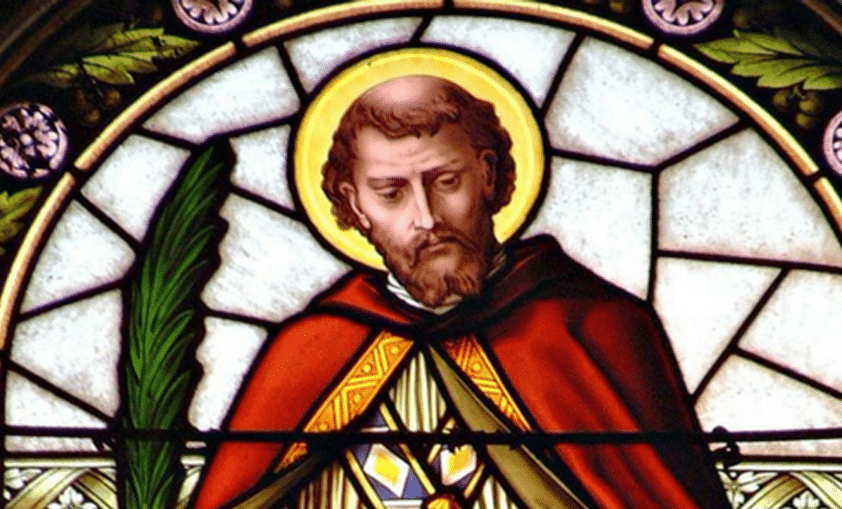
HOW VALENTINE'S DAY CAME TO BE?
If you’ve ever wondered why we celebrate Valentine’s Day then hopefully our guide will explain all you need to know about the whys, hows, and wheres of the story and as Catholic, how we should commemorate the holiday.
The real story of Valentine’s Day begins in ancient times. The festival most likely has its roots in a Roman Festival called Lupercalia (sometimes known as Februa), which shares a few traits in common with modern Valentine’s Day. It was a popular spring festival also celebrated in February and celebrated purity and fertility, however, the message has been cleaned up somewhat today and now involves significantly less animal sacrifice. The ancient Lupercalia celebration also featured a practice of young noble people running through the streets naked.
The titular Saint Valentine also appeared in Roman times. He was said to be a priest who was martyred for marrying Christian couples at a time when the religion was strictly outlawed in the empire. Another legend also states that he was put to death for attempting to convert Emperor Claudius to Christianity.
When Christianity began to take hold in Europe the priests and bishops of the time were looking to replace the obviously pagan Lupercalia. In 496 Pope Gelasius, I declared the date to be the Feast of Saint Valentine’s with the hope of supplanting the festivities already in place.
As the middle ages rolled around and the idea of chivalry began to become popular amongst the nobility the idea of Valentine’s as the most romantic day of the year began taking hold. It is also believed that the French and English belief that this date marked the beginning of bird’s mating season. As birds are more monogamous than most other species of animals this added extra credence to this time of year as the time of celebration of love.
The more familiar elements of Valentine’s Day became more common in Britain in the 17th Century when it became the custom for lovers to exchange tokens of their affection on February 14th. Within a century this had spread across all social classes and by 1900 the printed cards we’re more familiar with started to go on sale.
Flowers were already a popular way to express love during the Victorian times and of course tied in beautifully with the fledgeling celebration, with the red rose becoming one of the symbols of the day. Chocolate companies also saw an opportunity to make their mark during the Valentine’s period, by selling attractive patterned chocolate boxes to loving couples. It is now estimated that around 36 million chocolate boxes are sold for the Valentine’s Day celebrations.
The festival is now celebrated across the USA, Canada, Mexico, the UK and many other European countries and only seems to be getting bigger by the year. In fact, there are often stories each year of people defying bans on the festivities in countries like Pakistan and Iran in order to celebrate a romantic evening full of hearts and flowers with their partners.
But let’s be honest, a lot of the holiday’s celebration these days often boils down to commercialization.For most people, the world “Saint” has entirely disappeared from this holiday’s title. But the reality is that St. Valentine’s story is much deeper than the cloud of candy and flowers might suggest.St. Valentine actually has a deep Catholic history.If you, like many people, aren’t a big fan of celebrating the holiday as it’s often observed these days, there is still a lot of its history that you can appreciate and celebrate.
Another facet to focus on if you’re a bit sick of modern Valentine’s Day celebrations is that St. Valentine worked miracles.
The most famous miracle attributed to St. Valentine occurred through a letter he is said to have written to a young blind girl before his martyrdom. The girl miraculously gained her sight to read the note.
Another version of this story (or perhaps a different miracle altogether) is that he restored sight to the blind daughter of his jailer while he was imprisoned.
There is much faith and holiness needed in someone’s life for God to work miracles through them. So focusing on what this faith and holiness looked like is perhaps a better way to celebrate the holiday than a mere focus on romantic love.
According to the popular story of St. Valentine, he performed marriages of Christian couples in secret when emperor Claudius II outlawed Christian marriage.While on the surface this situation seems very far removed from our own day and age, we can celebrate the fact that St. Valentine saw the value and sanctity of marriage when those in governmental power did not.
When we put it that way, it doesn’t sound too much different from nowadays, as we can see the sanctity of marriage being attacked around us on every side.
We can turn to St. Valentine’s example of faith and commitment to marriage, when we feel discouraged at the attacks on marriage’s sanctity today.
It’s pretty clear why St. Valentine is the patron saint of romantic love. His patronage of happy marriages and of young people don’t seem surprising, either.
But he’s also a patron of beekeepers and epilepsy. While it’s not readily clear why, it’s a nice tidbit for those of us looking for other things to celebrate this Valentine’s day.If beekeeping or epilepsy happen to be close to your life, now would be a great time to get more involved in the cause, to volunteer or raise awareness.
Acts of service can be a great way to commemorate the holiday, if you’re looking for an alternative to traditional Valentine’s Day celebrations.Valentine’s Day doesn’t have to be synonymous with romantic love, flowers, and candy. You really can celebrate the day totally devoid of greeting cards or pink decorative hearts.
Take the opportunity instead to celebrate the various aspects of history contained in the day, the different saints who share the name, and the connection to our faith that the day represents.
This Valentine’s Day, learn more for yourself about just what it is we’re celebrating.

























